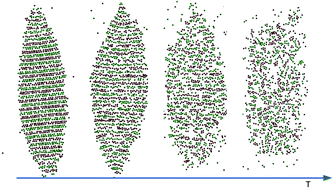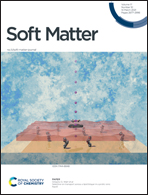Self-assembly in mixtures with competing interactions
Abstract
A binary mixture of particles interacting with spherically-symmetrical potentials leading to microsegregation is studied by theory and molecular dynamics (MD) simulations. We consider spherical particles with equal diameters and volume fractions. Motivated by the mixture of oppositely charged particles with different adsorption preferences immersed in a near-critical binary solvent, we assume short-range attraction long-range repulsion for the interaction between like particles, and short-range repulsion long-range attraction for the interaction between different ones. In order to predict structural and thermodynamic properties of such complex mixtures, we develop a theory combining the density functional and field-theoretical methods. We show that concentration fluctuations in mesoscopic regions lead to a qualitative change of the phase diagram compared to mean-field predictions. Both theory and MD simulations show coexistence of a low-density disordered phase with a high-density phase with alternating layers rich in the first and second components. In these layers, crystalline structure is present in the solid, and absent in the liquid crystals. The density and the degree of order of the ordered phase decrease with increasing temperature, up to a temperature where the theory predicts a narrow two-phase region with increasing density of both phases for increasing temperature. MD simulations show that monocrystals of the solid and liquid crystals have a prolate shape with the axis parallel to the direction of concentration oscillations, and the deviation from the spherical shape increases with increasing periodic order.



 Please wait while we load your content...
Please wait while we load your content...